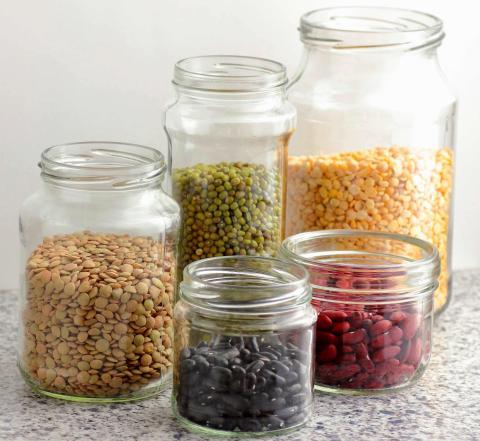Simply Put: “Dry Canning” Is Not Canning

According to the National Center on Food Preservation, “canning as a method of food preservation or processing refers to a procedure of heat-treating closed containers of food with the goal of producing what is called a "commercially sterile", vacuum sealed food that can then be stored safely at room temperature. The preservation goal is to kill any spoilage and pathogenic (harmful) microorganisms that otherwise would be able to survive in food at room temperature storage. ¹” The procedures used to achieve this goal are boiling water canning, atmospheric steam canning, or pressure canning.
“Dry canning” has been circulating on the web for several years and involves placing foods such as grains, nuts, and beans into canning jars. The jars with food are then heated in a 200°F oven for a specific length of time. The lids may or may not be applied to the jars prior to being placed in the oven. Lids placed on the jars immediately after heating may appear to ‘seal’.
Don’t be fooled. There are many issues that lead to safety concerns with this method of sealing jars of food.
-
This is NOT canning and while the lids may “seal” it is not necessarily a true, safe seal. It also does not necessarily mean the food is safe. Mold and bacterial spores may not be killed using this process and may lead to future problems.
-
This method does not remove all the oxygen from the jar before sealing and may trap moisture from the food if condensation occurs. While the presence of spores would not be an issue in very dry foods, any moisture pockets from condensation or incompletely dried foods could be a problem. Moisture in the jar with some retained oxygen could support the growth of airborne molds or even bacteria not killed by the low heating in some seemingly dry foods.
-
The is no known research that has shown that the dry oven process used at home sterilizes dry food or produces the claimed extended shelf life with quality.
-
This heating process could even make the quality of some foods worse. This could be either by moisture condensation upon cooling, or enzyme activity causing rancidity of foods containing fats such as nuts.
-
A major manufacturer of jars and lids does not recommend putting them in the oven.
-
Due to the cons of this method, you would be wasting your time, energy, resources, food and equipment.
If you are looking for reliable, safe methods of long-term foods storage, consider this publication by Utah State University Extension:
A Guide to Food Storage for Emergencies found at https://extension.usu.edu/preserve-the-harvest/files/Food-Storage-Booklet.pdf.
Sources:
National Center for Home Food Preservation. 2020. “Dry Canning” Isn’t Canning”. https://nchfp.uga.edu/blog/dry-canning-isnt-canning-to-me
University of Missouri Extension. 2020. Preserve It Fresh, Preserve It Safe: 2020, No. 3 (May/June). https://extension.missouri.edu/publications/hes134

